-
Posts
543 -
Joined
-
Last visited
Content Type
Profiles
Forums
Gallery
Events
Posts posted by 6ohiocav
-
-
Mike,
Looking good. Not sure what operating system you have on your computer, but if you open your photos in Microsoft "Paint", you can rotate them accordingly and then save them to your file and then download them to the forum. I usually take my picures with an I phone 7 and despite how they download from the phone to my computer, they may still be rotated, even though they appear upright. If you have that problem, change anything with the photo and when saved, you can be assured that it will be upright.
If this does not make sense, send me a private e-mail and I will send better instructions.
-
I wholly concur with E.J. on this one. I am at the same point in my build and I used metal pins with a drop of CA to secure the yards to the masts and then created beaded parrels for the yards calling for them, and simple riggin rope for the remainder. I have some photos on the log if you want to take a look.
Like you, I also dressed up the yards and masts as much as i could before attaching to the ship. Good call.
-
SPANKER GAFF AND BOOM
Before stepping the main mast, I prepared the spanker gaff and boom, and the rigging blocks and such for the mast.
I dressed up the gaff and boom with cleats and chock blocks. I inserted small pin heads to replicate carriage bolts, then sent it off to the paint booth for primer and two coats of flat black paint. I then seized thimble lashings and blocks per the plans.
-
TOPSAIL YARD, LIFT AND HALLIARD
I worked on the topsail yard for the main mast. I pinned it to the mast, and attached the lifts and halliards. I still have to attach the parrel.
Topsail Yard lift: I used .012 rope, seized to the end of the yard with a 1/8 block stropped to the end (which I believe would be used for the clew line if rigged with sails), then routed through 1/8 block in the shrouds, and then will be belayed to the deck.
Topsail Yard Halliard: I used a long single strand of .018 rope. I started by running it through the Starboard 1/8 block in the shrouds, then down to the 5/32 block seized to the center of the yard, and then up to the 1/8 block in the port shrouds. Both ends of this rope will be belayed to tackles attached to the channels.
I am now getting close to stepping the mast. The spaghetti mass of ropes is starting to get a bit out of hand. I still have to seize some blocks for the spanker mast, and generally work on preparing the mast for the booms. As I found on the foremast, once stepped, the process of attaching all of the lines will move at a spirited pace.
- PeteB, Elijah, Ryland Craze and 4 others
-
 7
7
-
ROYAL AND T’GALLANT HALLIARDS, LIFTS, CLEW LINES AND SHEETS
I worked on rigging the royal and t’gallant yards.
Royal Halliard/Tye: I used .012 rope, tied one end to the yard, and routed the other end through a dumb sheave in the mast, and belayed the end to the lower shroud sheave per the plans.
Royal Lifts: I used .012 rope, tied them off to the ends of the yard, and tied them off at the top of the mast. (I still have to tie a knot and cut the excess).
Royal Clew lines. Since I have no sails, I elected to simply tie the end off on the yard and routed them through a 1/8 block seized to the yard and down to the lower shrouds where I belayed the end to the stave as per the plans. I put some slack in the line and tied a simple square knot in the rope to keep it from pulling through the block.
T’gallant Halliard/Tye: I used .018 rope, tied one end to the yard, and routed the other end through a dumb sheave in the mast, and belayed it to a tackle rigged to the lower tree.
T’gallant Lifts: I used .012 rope, tied them off to the ends of the yard, and routed them through a 1/8 block mounted in the shrouds and belayed to the tackle rigged to the lower tree.
T’gallant Clew Lines: I used .012 rope. Like the royal, I tied the end off on the yard, and ran it through a DOUBLE 1/8 block seized to the yard. This will belay to the pin rail on the deck, so I made the rope extra long and it will remain free until I step the mast. I created some slack and tied a square knot against the block
T’gallant Sheets: I used .012 rope and tied the end to the yard. I pulled this line tighter than the clew line. I routed it through the same DOUBLE block using a square knot to keep it from pulling through. It too belays to the pin rail on the deck.
I am not sure the clew lines and sheets are right or not. Just my landlubbers interpretation of the rigging plans.
-
Thanks Sailor123...,
That makes sense and I will shove on as the plan provides.
- Ryland Craze, Elijah, Canute and 1 other
-
 4
4
-
Brian,
That is the angle I see on the model. I went fishing for photos of the real ship after I posted the question. Thanks for finding this first. My eye feels better.
- Ryland Craze, PeteB, Canute and 2 others
-
 5
5
-
Gents,
Now that I am so close to stepping the main mast, I have noted that the Main mast is pitched at a pretty distinct angle, much more severe than the fore mast. Since this is sitting in the slot cut into the keel, it has to be as planned. It just does not "sit well" with my eye.
Is this accurate? It would seem to be more pleasing to my eye if I matched the pitch with the foremast. It too is angled back somewhat, but not as severe as the main. Are the angled masts peculiar to shallow drafted brigs, as they are much more vertical in three masted frigates and rated ships.
Thanks for looking in.
-
MAIN MAST UPPER RATLINES, ROYAL AND T’GALLANT YARDS
I received my shipment from Syren, on time and as ordered, (thanks Chuck again!). Therefore, I was able to finish the upper ratlines. Since I had worked on the yards while in waiting, I was able to raise the royal and t’gallant yards.
I pinned them in place with .24 wire and a spot of CA. It holds them in place secure enough to work on the lifts and parrels. Once those are set, it is sturdy enough to thread the clew line and sheet running lines through the blocks. I tied the ends off on the end of the yards.
Here are some photos of my progress. I placed the main mast in its deck hole temporarily for illustration purposes only.
- mikiek, Ryland Craze, Canute and 5 others
-
 8
8
-
Brian
Since I am currently rigging my Model Shipways Niagara, I felt compelled to put in my two cents worth. First off, your Niagara is wonderful and I hope that you get back to it. I can tell you that it does not take much in the way of rigging to bring out the magnificent beauty of the ship.
I have followed your build log very closely to guide me through the hull and deck construction. Your work is exquisite.
I have complained about the rigging instructions in my own log for the very reason you identified at the beginning of this post. Sheet 5 and 6 are indeed hard to follow since all of the sails are overlayed onto the rigging plans. But it caused me to do my homework. I had to learn how a ship works, and how and why a ship is rigged the way it is. Most of that was done on this forum. As a model ship builder thinking about doing future projects, it is an exercise worth the effort.
I decided that I had to make a plan. I decided to do ALL of the standing rigging FIRST. That is all of the shrouds and stays. I decided to start with my bowsprit and foremast , working from the bottom up on the foremast, and inside out on the bowsprit. Parcelling out the standing rigging from the integrated plans is a little easier than it first seems. If you start there, take your time, and like me, refer to the wonderfully descriptive build logs on this forum, I believe you will succeed, and the farther you go, the more skill and confidence you will gain. AND more importantly, your ship will begin to really look great.
The running rigging was a bit more complicated. However, start with a plan. I broke the running rigging into two categories. The lines that attached to masts and yards (lifts, halliards, braces, slings) which I decided to do ALL of, and the lines that attach to sails (sheets, buntlines, clews, reefs). The plans are pretty good when it comes to the running rigging that attaches to the masts and yards. It is there, albeit, buried underneath some of the sail diagrams. As far as the rigging that attaches to sails (when you decide to rig without sails), there is nothing, other than a reference in the instruction manual advising us to tie the ends off on the yards somewhere???
I have seen Niagara builds that totally omit the running rigging that attaches to sails. They look great. I decided to do some of this rigging, focusing on the clews and sheets. i just tied them off on the yards. I don't know it if is right, but it looks ok to me. And it adds another layer of running rigging that looks great on the ship.
I am a true journeyman in this hobby, who makes all kinds of mistakes all of the time. However, if you decide to embark on the rigging on your Niagara, and I truly hope you do, I would be more than happy to help you as best I can. I have tried to take good photos of my rigging experience, and label each of my posts to help future Niagara builders to find a particular part or exercise.
And finally, let me say this. Once you tackle the Niagara rigging plans, and get some experience, you will find ALL future plans, for whatever ship you work on next, to be a lot easier to follow.
-
Pete, Mike, Brian and Mike,
Thanks for stopping in. I have been keeping track of how many aftermarket blocks and rope that I am using and should be able to provide a materials list for future Niagara builders when I am all done. There is actually some light emerging from that dark tunnel.
Chuck's products make a huge difference. Don't get me wrong - I love this kit. And I also fully understand the economics of wooden POB kits. I would have never purchased this kit as a first timer if it cost me what I have now paid over the years.
Early on, I decided to go "all in" by upgrading all of the laser cut parts to cherry hardwood, and using Syren blocks and rope. The result provides justification for this investment.
-
Mike,
Good idea on the stern. I have not done anything to that. I have to make the mooring cleats and all of the other hardware, and yes, the lettering. I have been giving that some thought. I would love to find someone or something that could laser engrave the letters on a small plank for attachment to the stern. Something that I could paint yellow like the original. I have not found anyone that can do this at such a small scale. I can't see me carving it, so perhaps some down loadable letters to act as decals like in my old plastic model days.
I see that you have almost finished the gun deck diarama. It looks fantastic. I hope you get back to your Niagara soon. I think you are really going to appreciate her beauty when you start hanging some rope.
Happy New Year my friend.
-
TOP MAST, UPPER SHROUDS, STAYS, ROYAL AND T’GALLANT YARDS
I have not posted anything lately, but I have been busy on the Main Mast. Working my way up, I attached the top mast, and then followed with the upper shrouds, burton pendants, stays, halliard blocks, lift blocks and staves. I then installed the t’gallant mast and the very upper shrouds, stays, halliard block and staves.
As I did on the foremast, I then focused my attention to the ratlines for the upper shrouds. And that is where I hit a dead end. I ran out of the.008 tan rigging line that I was using for my ratlines.
Not wanting to be dormant while I replenished my stores in the shipyard, I turned my attention to the Main Mast yards. I fully dressed the royal and t’gallant yards, and then ran out of 5/32 blocks that I was using for the braces. Another road block.
Soooo, I then turned to my anchors and will be working on those while I wait for my order from Syren to arrive.
Here are some photos of my progress. The Main mast is simply setting in place and my shrouds and stays are laying loose. And as I look at the photos, I note that some of the stays are misplaced.
-
Ughh.
Mine will be less than half the size. Thinking about scratch building them using the method in your design. I'll keep you posted.
-
Steve,
A tip of the hat to you. Your longboat is exceptional. I will soon have to build three of these, albeit in 1/64 scale and hope they look half as good as yours.
Happy Holidays.
-
MAIN MAST UPPER SHROUDS, STAYS, COURSE LIFTS AND SPANKER MAST
I tied the upper shrouds and stays for the main mast. I also created the course lift blocks that slip over the mast cap. I did this BEFORE I attached the cap – much easier to create this on the vice and slip over the cap.
I also worked on the spanker mast. This is a dowel supplied by the kit. I stained it with cherry stain and had to straighten it (best I could). I attached the bracket to the mast, and created the deck cradle. I also had to insert a square piece of cherry in the top to attach it to. Make sure that you leave a little of the mast exposed above the tops to accept the Spanker Gaff Cradle assembly, made with two blocks that hang over the end.
Here are the photos.
-
- mtaylor and CaptainSteve
-
 2
2
-
Gents,
Thanks guys for setting me straight. You are all right, and I was wrong and appreciate the clarification. I have removed my photo from this post so as not to perpetuate the error for future viewers.
I apologize to MarkJay for sending you in a wrong direction.
Frankie, your reference to the Niagara plans points us to the upper shrouds, and I followed those directions completely. The upper shrouds have an even number of shrouds, and I created the Burton Pendant separately as set forth in your highlighted section of the plan (although I did not use a cont splice - way to difficult at this scale and above my pay grade).
My confusion however came from the lower shrouds, and the fact that there is an odd number of shroud lines. There is no diagram in my plans that tells us landlubbers what to do with the odd line, and the large rigging sheet creates the illusion that the odd shroud line is "tipped off" with the burton pendant. I posted a question in my log about the lower pendant before I chose the method I did. It is a reasonable conclusion to a "modeler." However, after considering your note, and Druxey's, and thinking about it, It makes perfect sense that this was wrong for a real ship, which is what I am realistically trying to recreate.
I can add another obscure bit of information in my growing bag of 19th Century shipwright knowledge.
- mtaylor, druxey and CaptainSteve
-
 3
3
-
Dave,
Would you mind sharing with me the source of your plans for your this exciting build? Are they available for purchase to others with scratch built Constitution fever?
- Piet, CaptainSteve, Elijah and 3 others
-
 6
6
-
Hey there Mark,
Your inquiry was very timely for me. I just assembled the Burton Pendants required on the Niagara last evening and posted photos on my log. There are an odd number of shroud lines on the Niagara. The plans call for the forward shroud line to be lashed with a Burton Pendant, it being the first line to be placed over the mast head. I served the entire shroud and with a whipping, created a simple thimble.
Not sure if this is the correct method, but it is what is called for in my less than clear plans.
Hope this helps.
-
-
CATHARPIN
One other task on the foremast that I should have done earlier was the installation of the catharpin on the lower shroud. That should have been done as soon as I did the lower shrouds and futtock shrouds. By waiting to do this after more of the rigging had been put in place made this harder than it needed to be.
I used a .025 rope and tied 2 small measured pieces, routed through a small blackened ring, on each side of the staves. Once set, I tied the two rings together to create the tension that tightened up the shrouds and futtock shrouds. A very nifty method to keep everything taut.
-
MAIN MAST SHROUDS, MAIN STAY AND MAIN PREVENTER STAY, COURSE HARNESS
I spent the evening serving the forward main mast shrouds, main and preventer stays, and assembling the course yard harness. All of these have to be placed over the main mast top before attaching the cap.
I used a served .035 rope for the forward shroud and tied a burton pendant on the end per the plans. I also used a .035 served rope for and preventer stay and a served .045 rope for the main stay. On those, I turned the mouse on my wood lathe using the same process I use for the bullseyes. I then glue them to my rope and use the serving line to cover them. I have found that it helps if you put a small amount of CA glue around the mouse to hold the serving line from slipping off.
With these done, I can place them over the mast head and attach the top and the cap. As I did with the foremast, I will then work my way up.
-
LOWER MAIN MAST SHROUDS
I worked on preparing the lower shrouds for the main mast. I have used .035 rope.The ENTIRE forward shroud will be served. For the remaining 4 shroud lines, I only served that portion of the shroud that wrapped around the mast. As I showed in an earlier post regarding the foremast, that ended up being exactly 2 inches.
Here are the shots of those back shroud lines. After serving the 2 inch section, I mount it in the vice and lash 1/2 inch from the ends and cover up the serving ends. The picture explains it better. This leaves enough space in the loop to go over the end of the mast head.



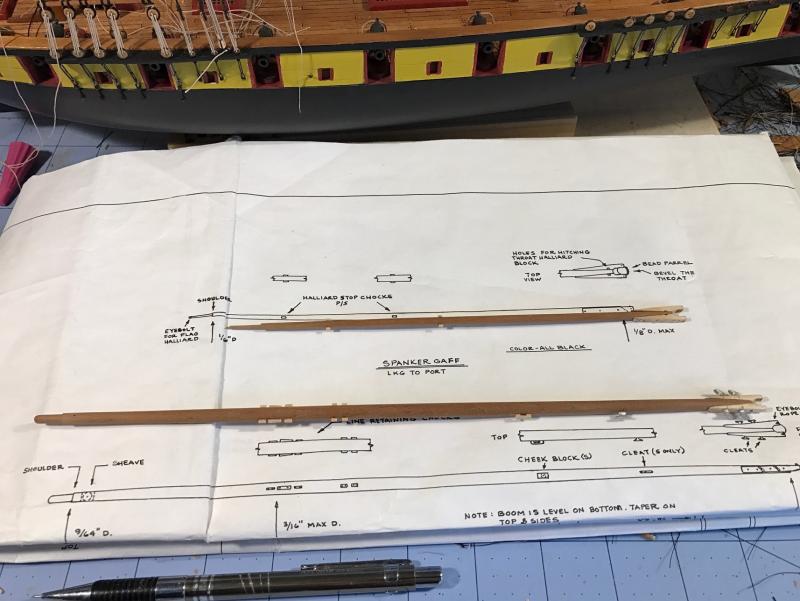
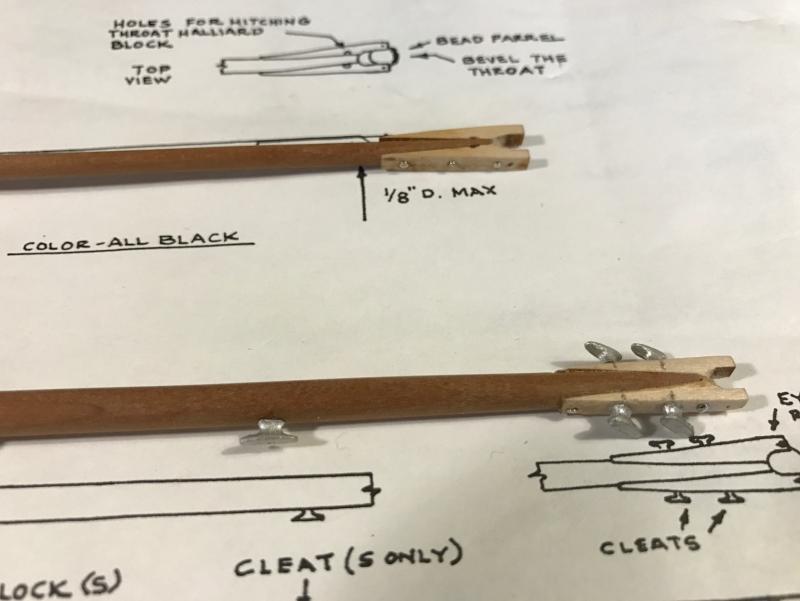
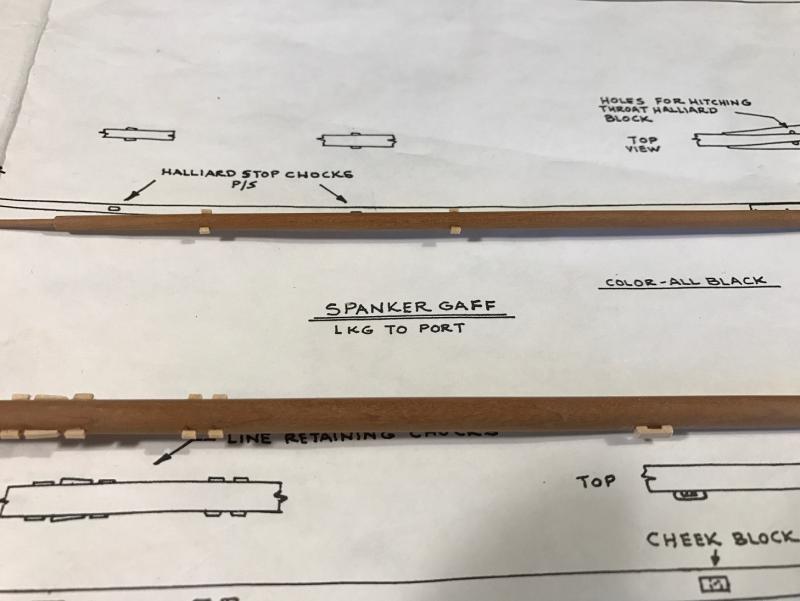
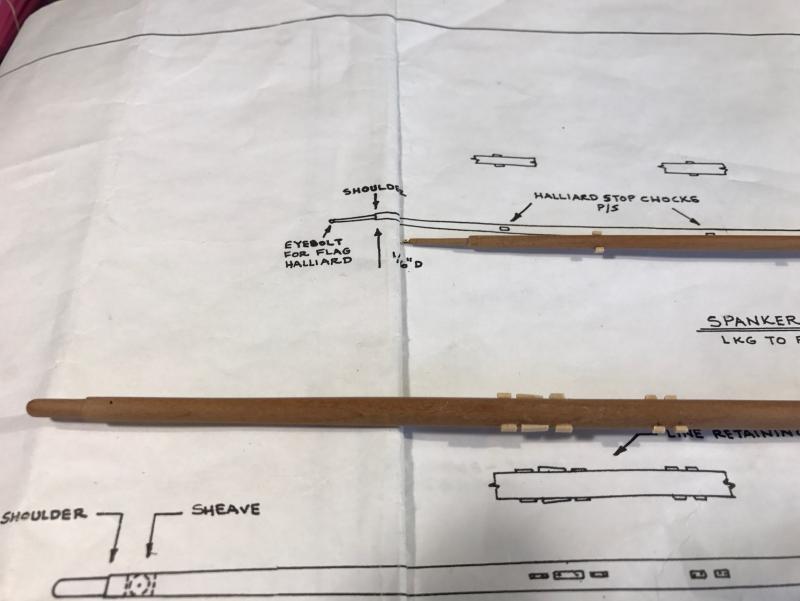
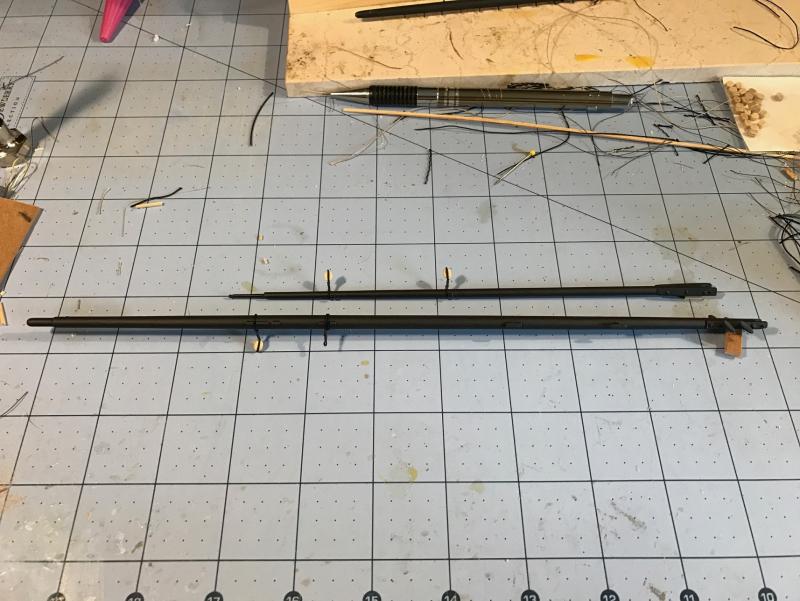
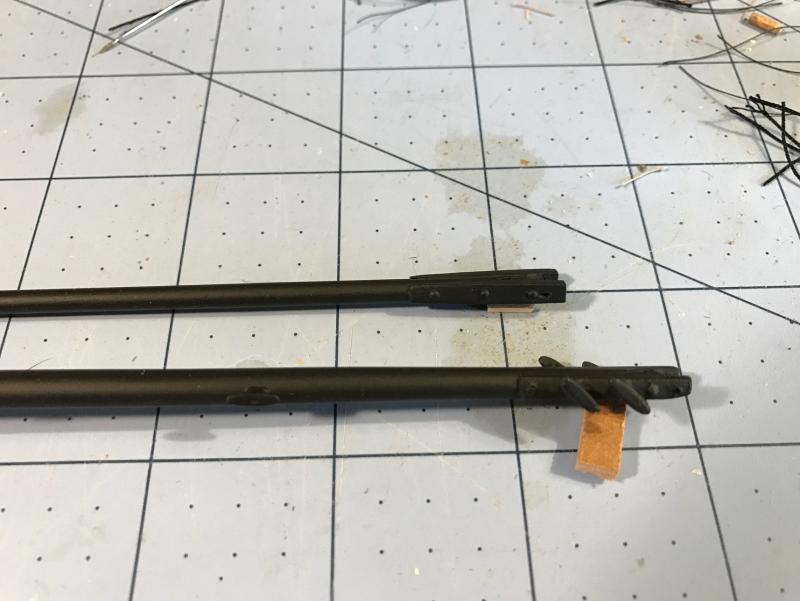
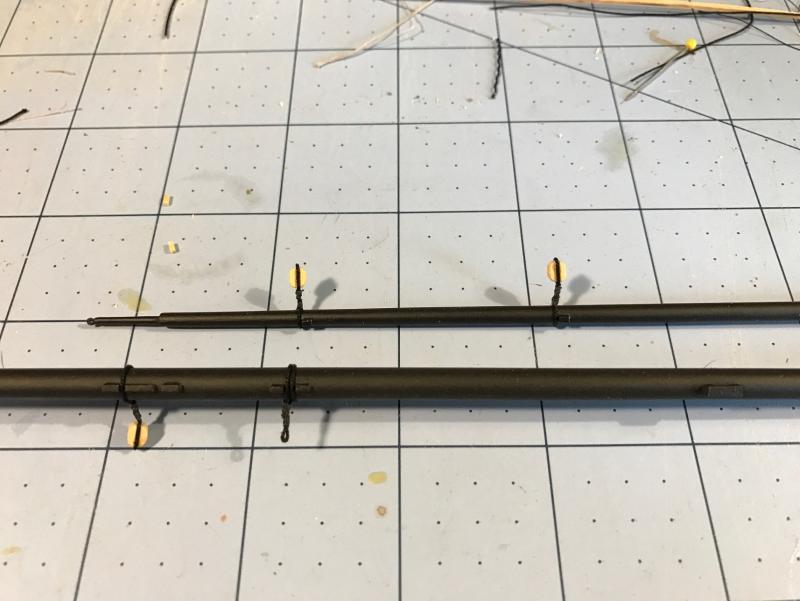
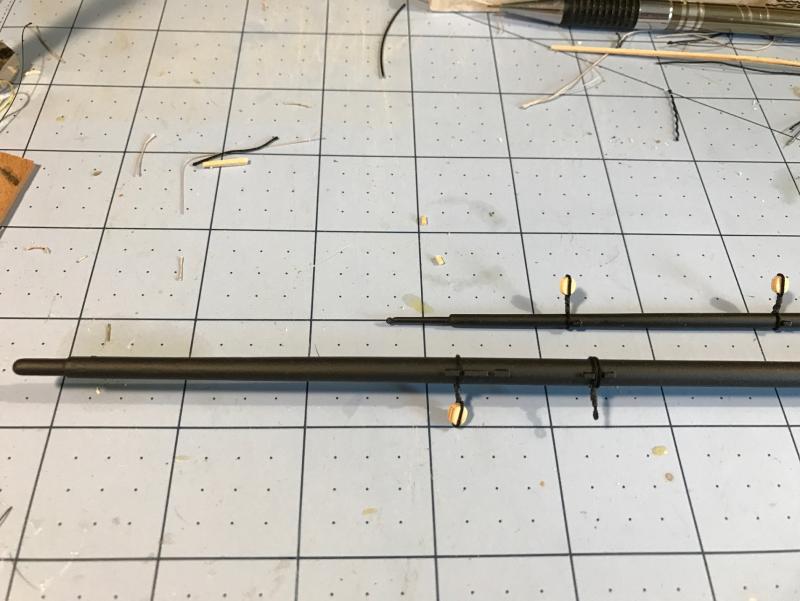
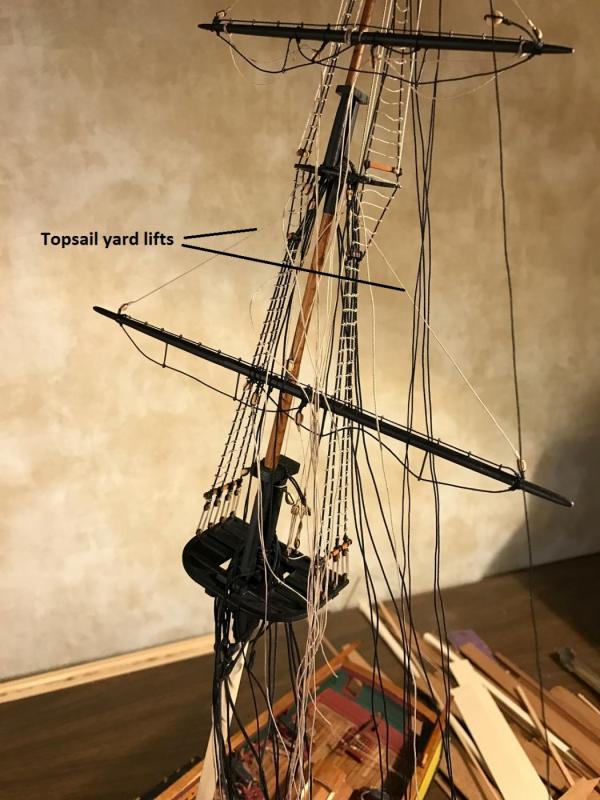
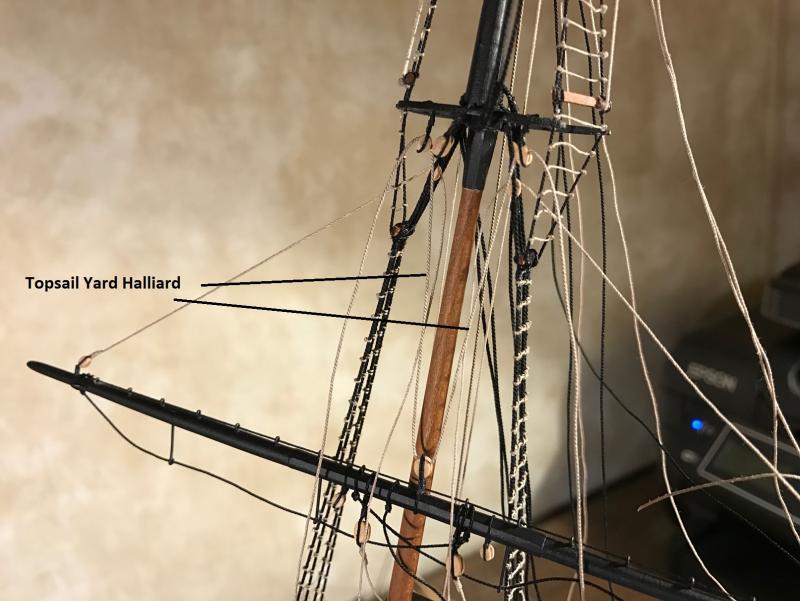
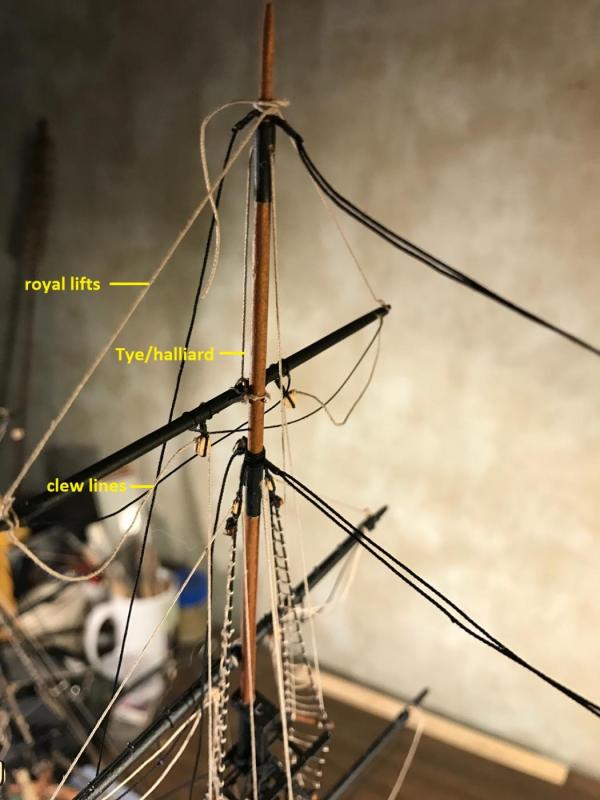
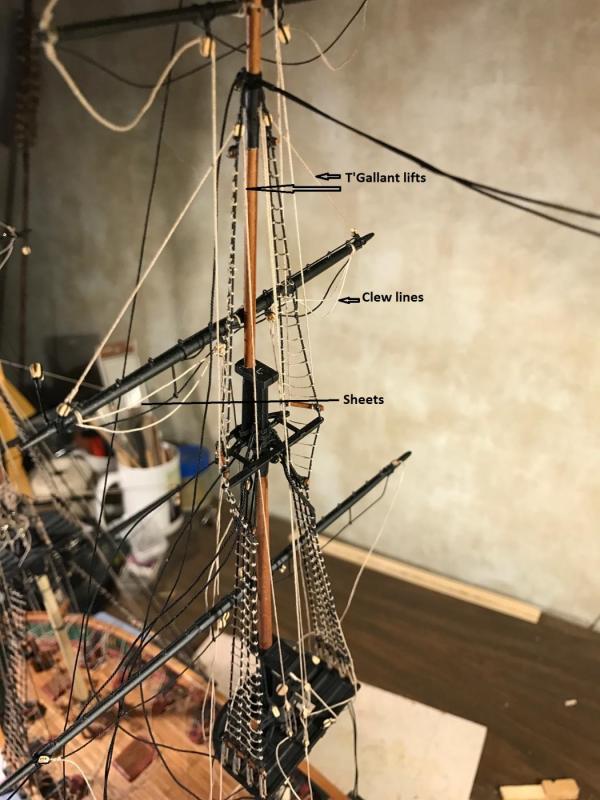
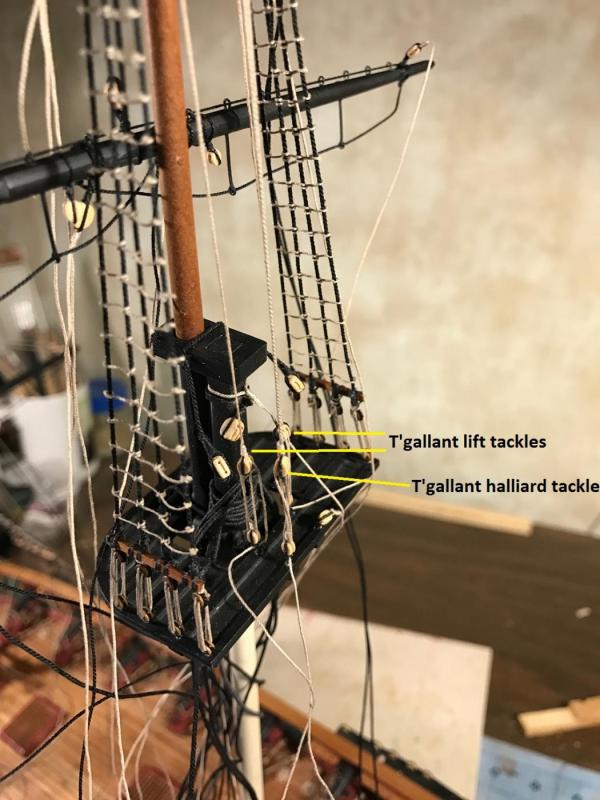
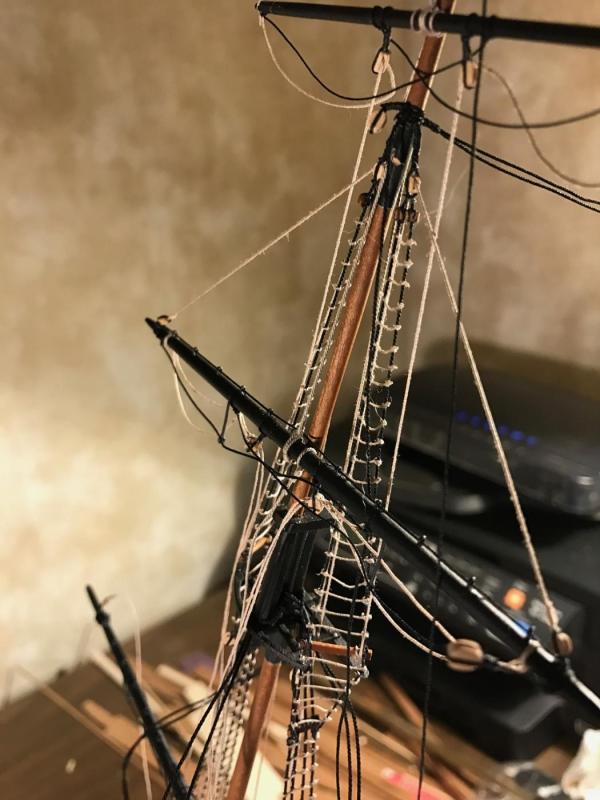
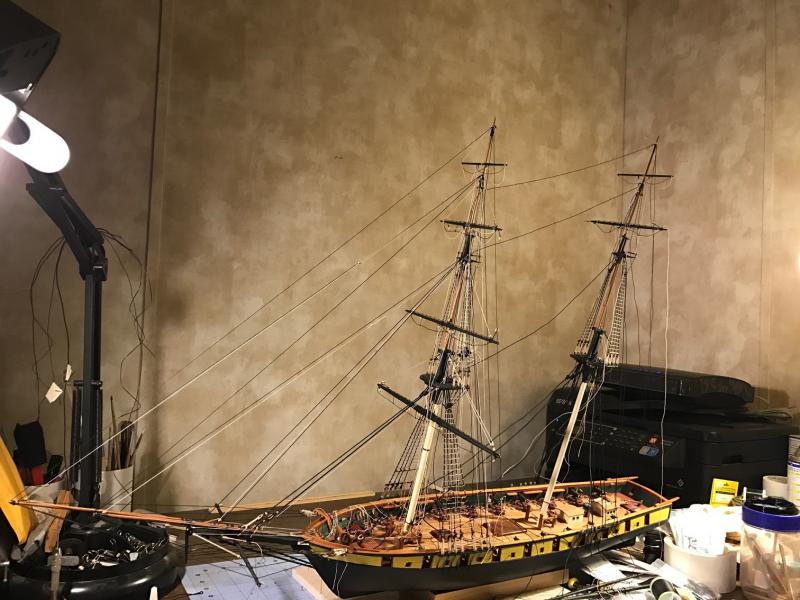
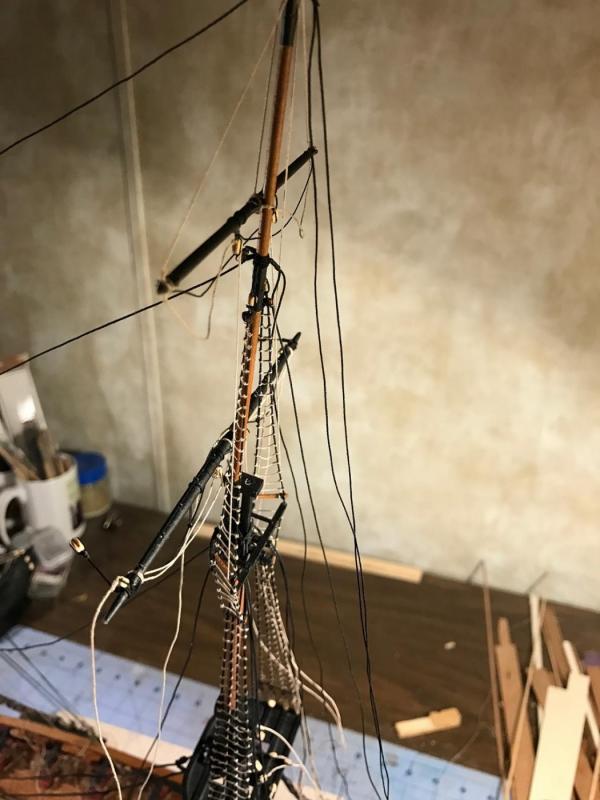
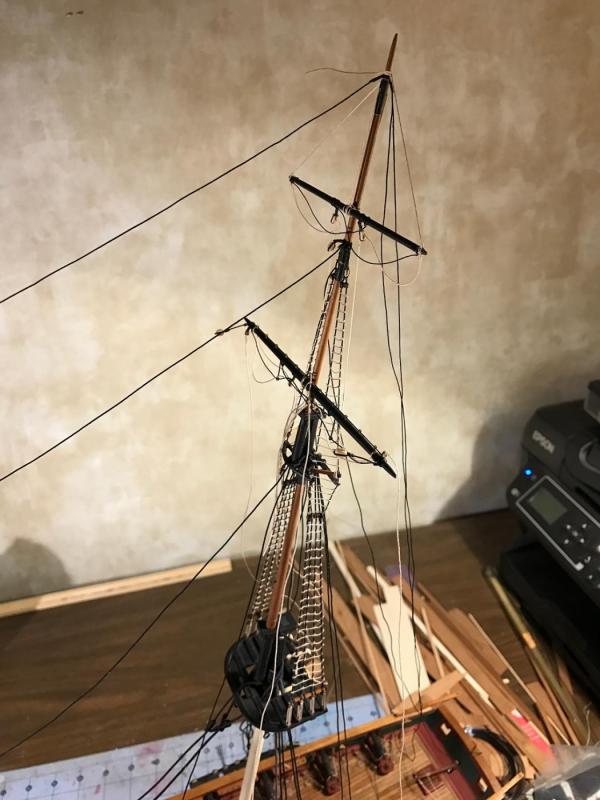
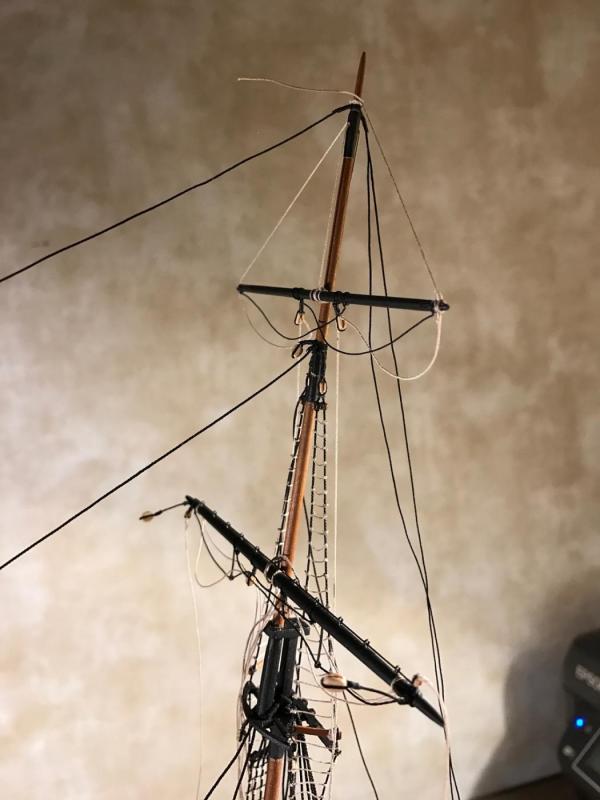
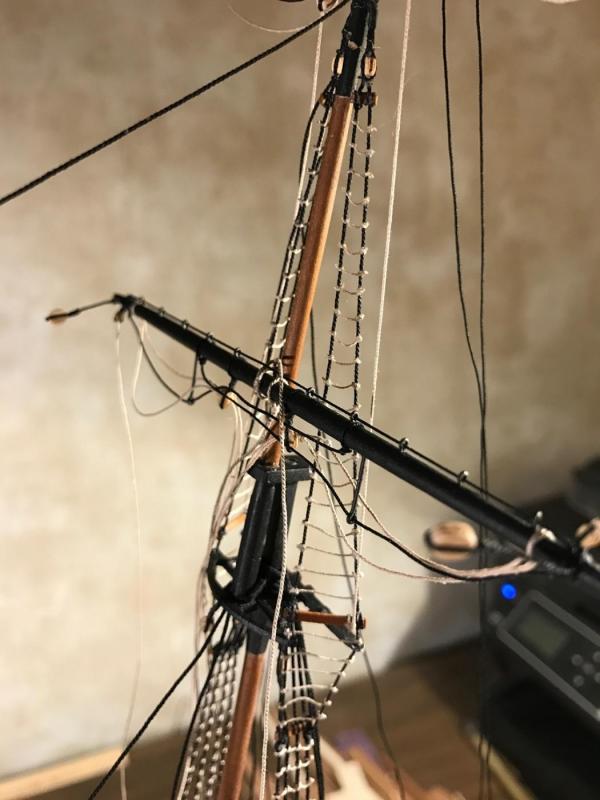
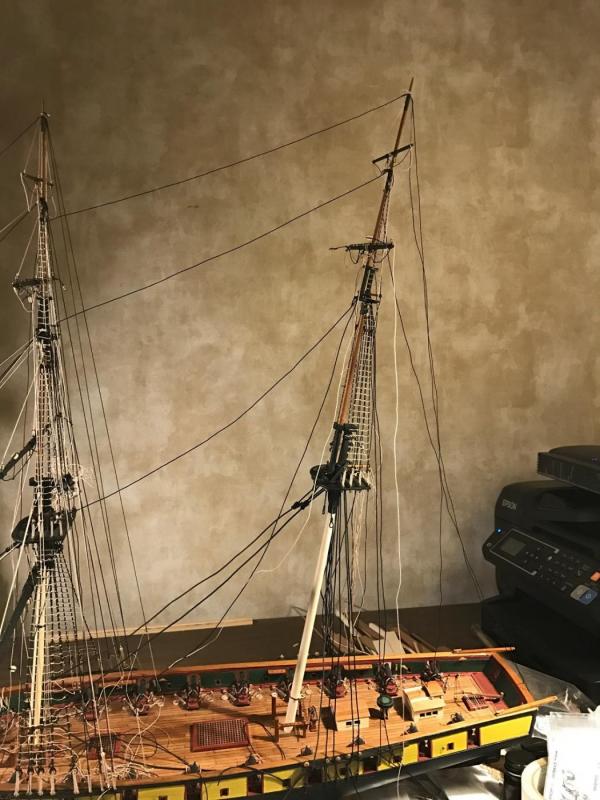
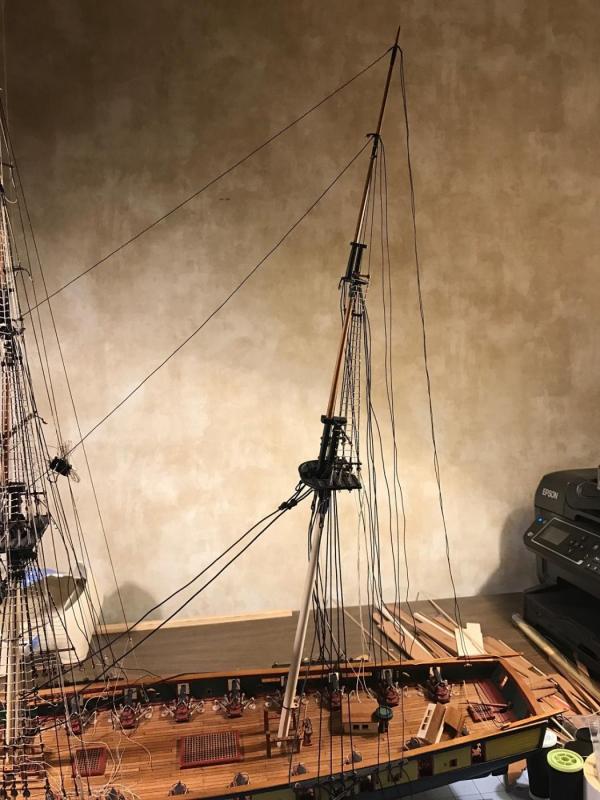
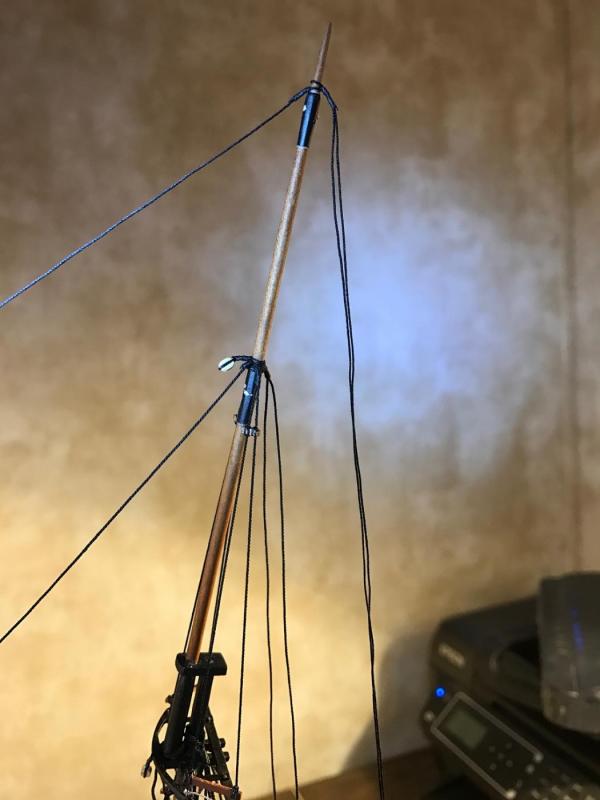
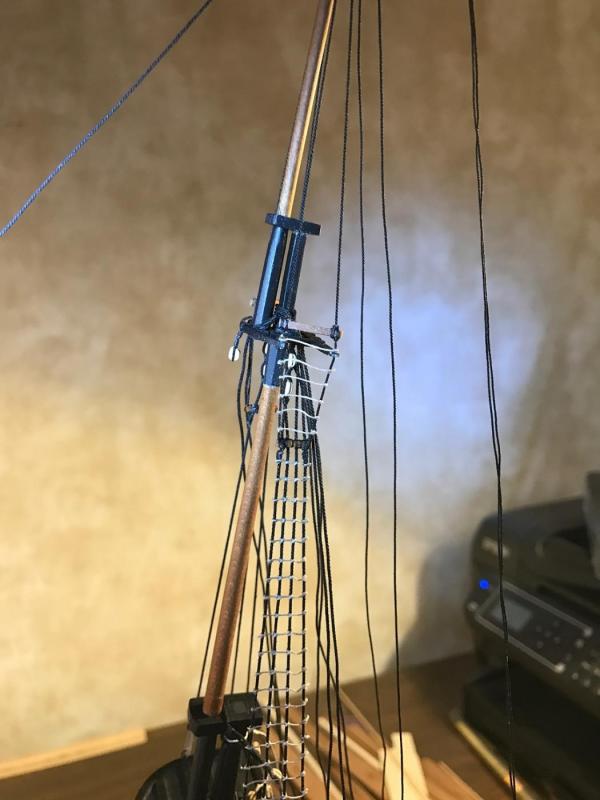
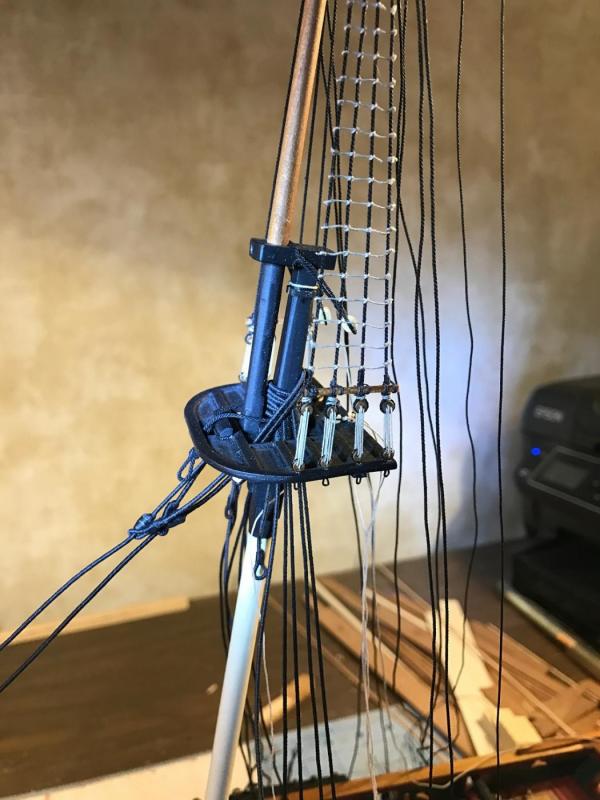
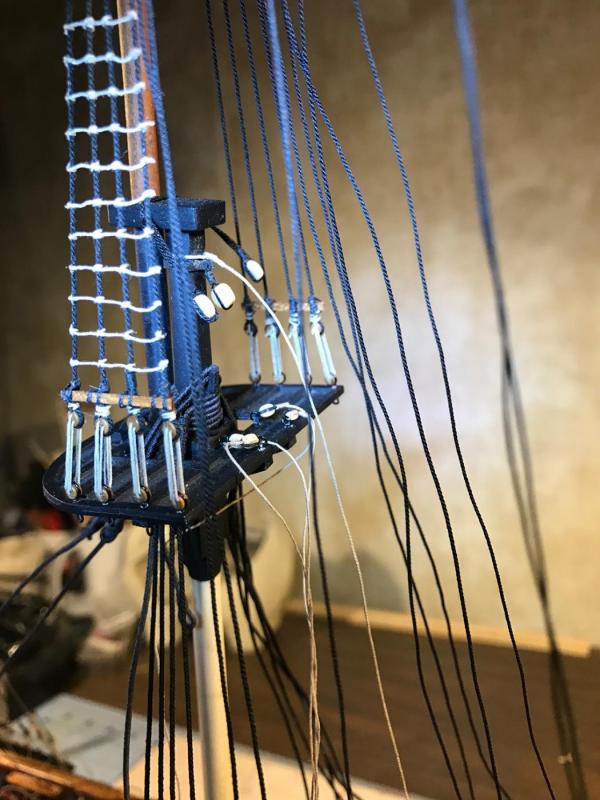
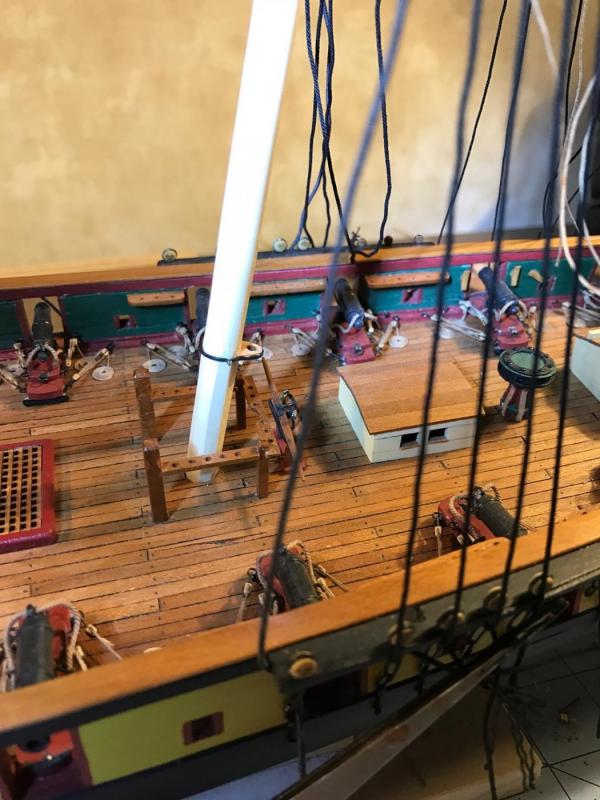
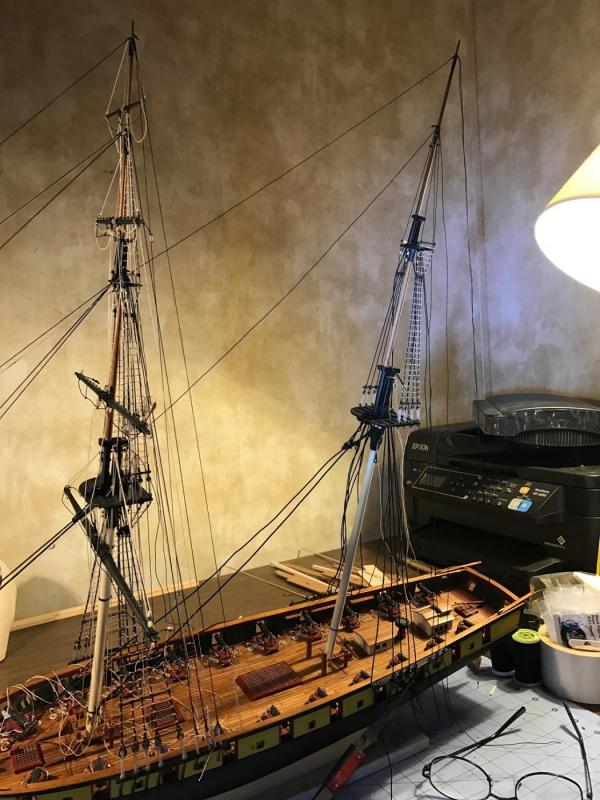
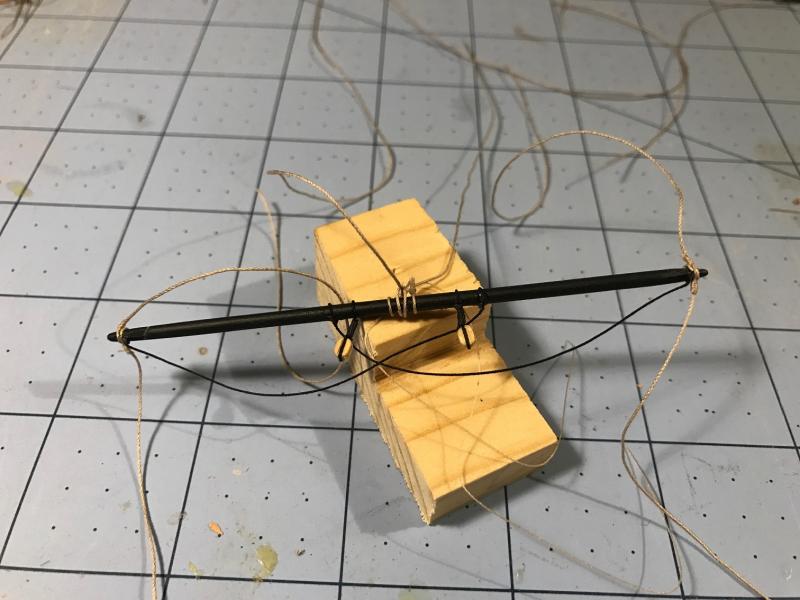
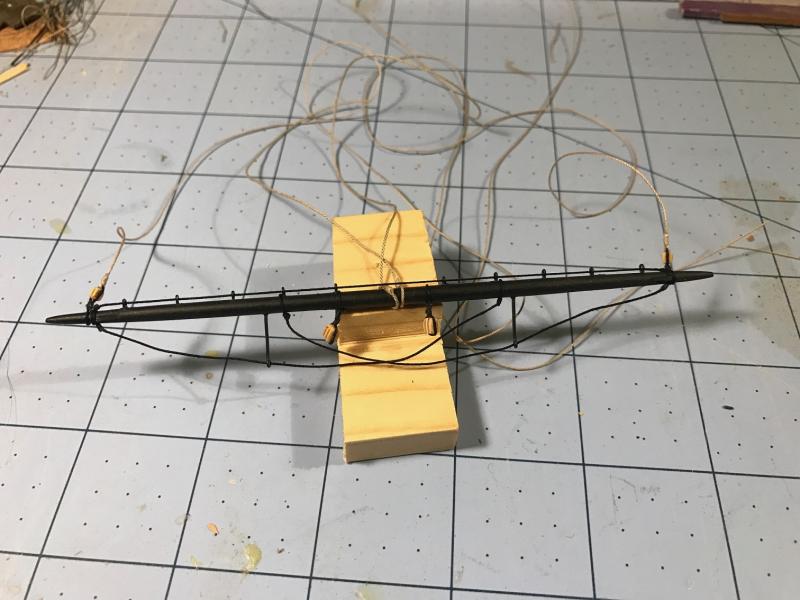

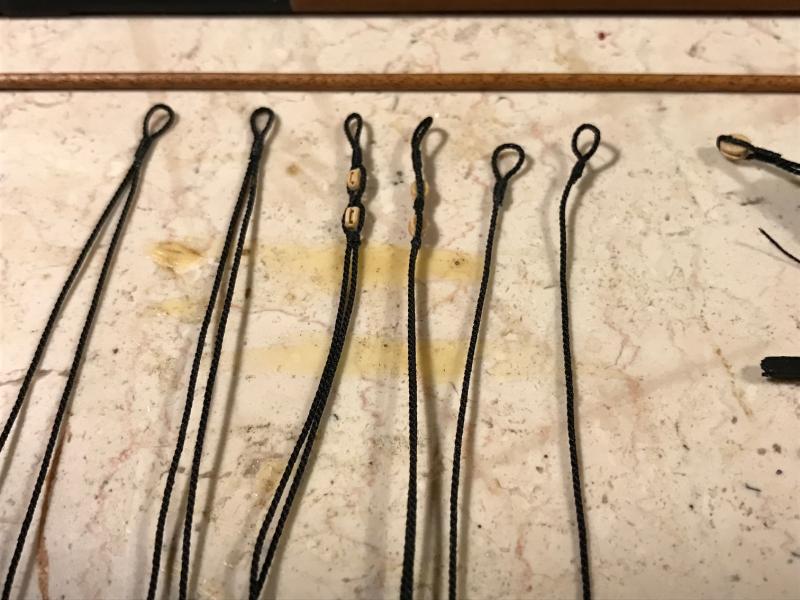
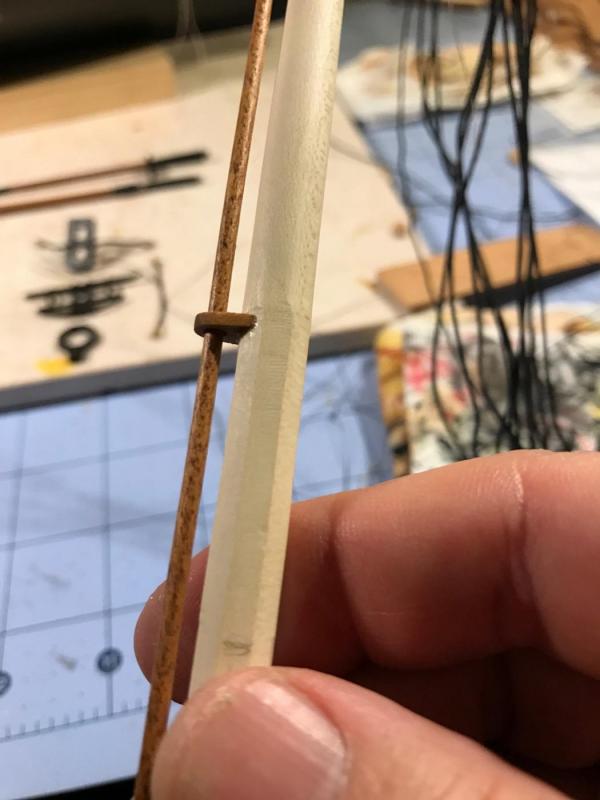
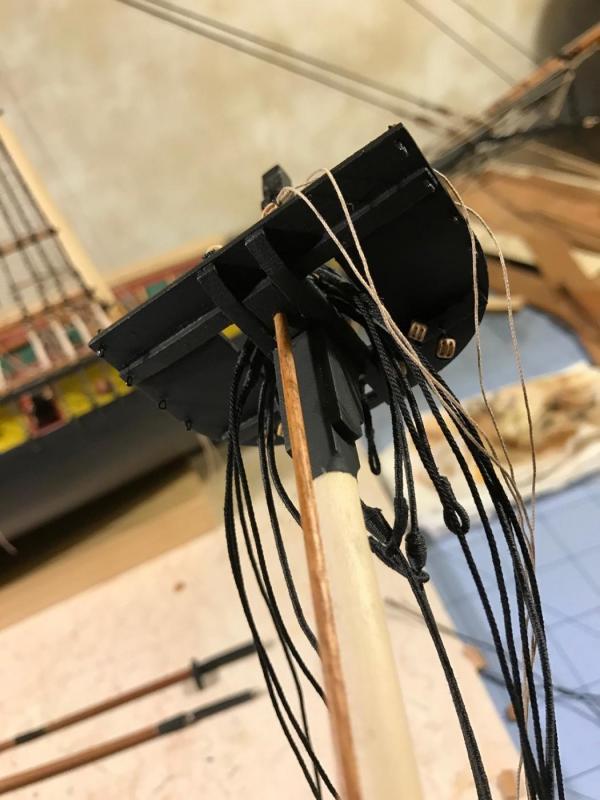
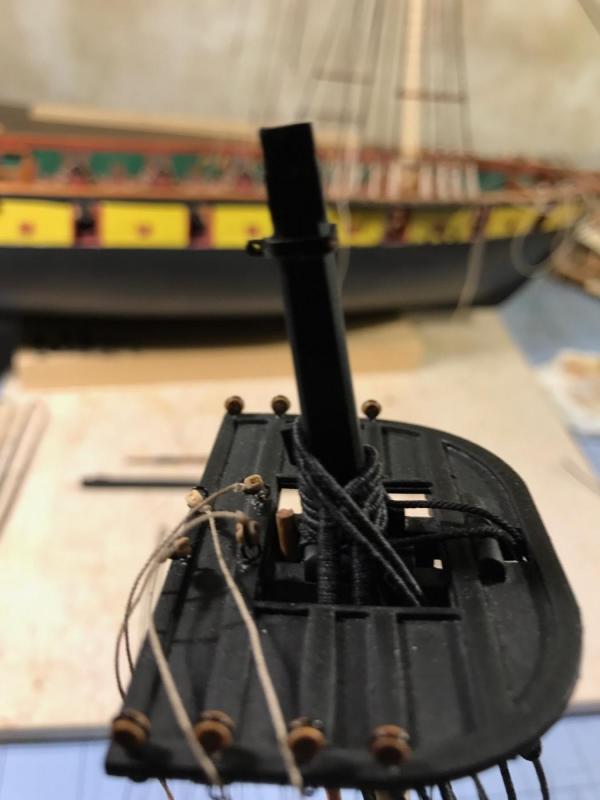
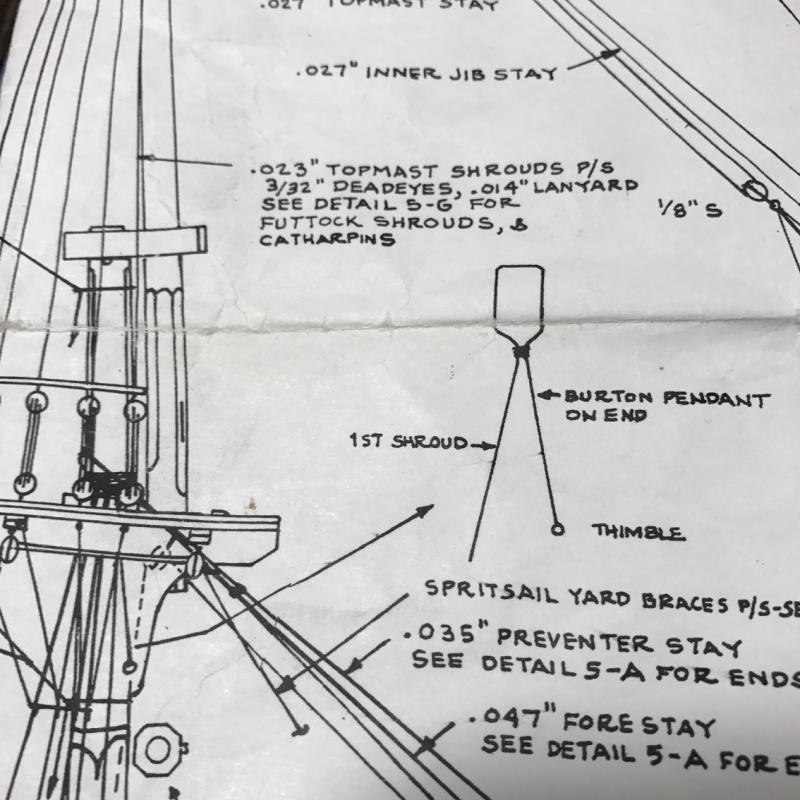
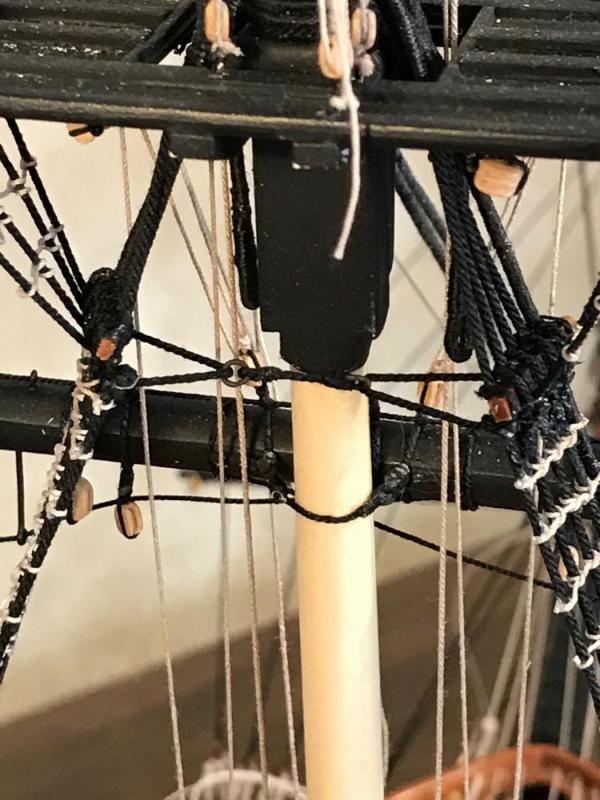
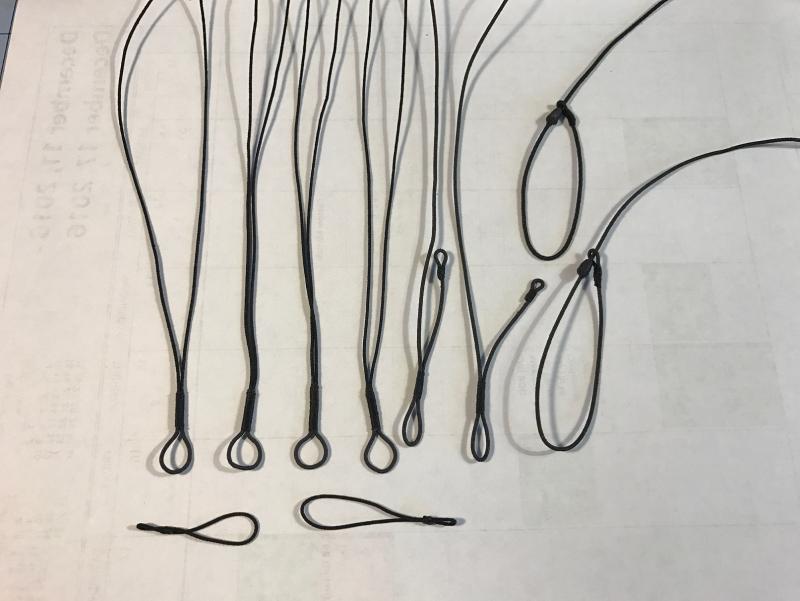
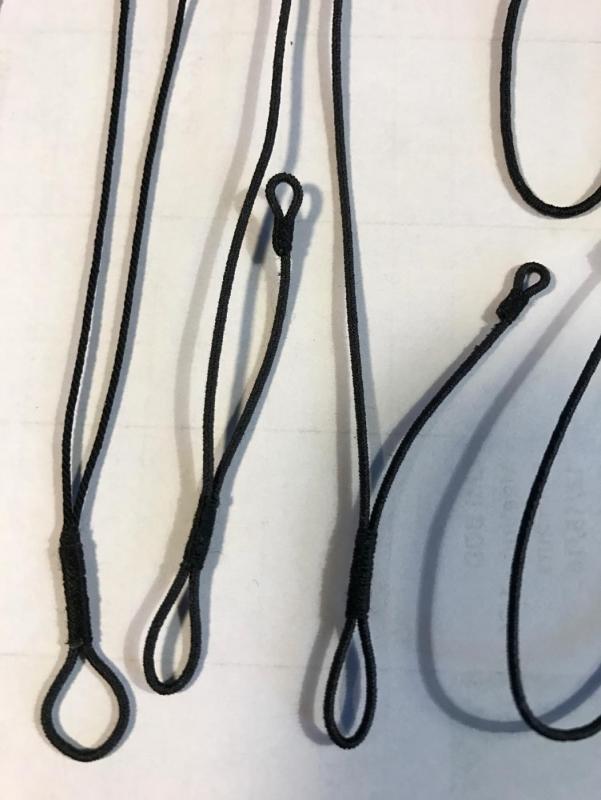
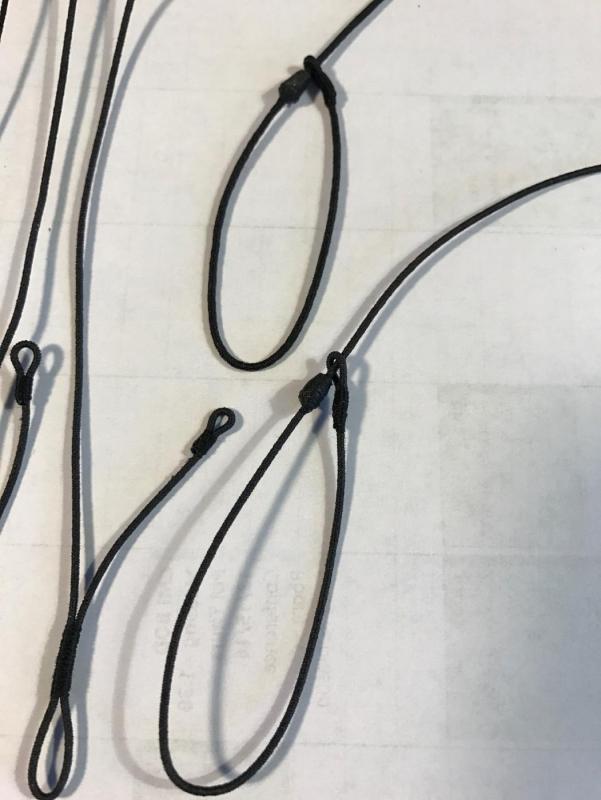
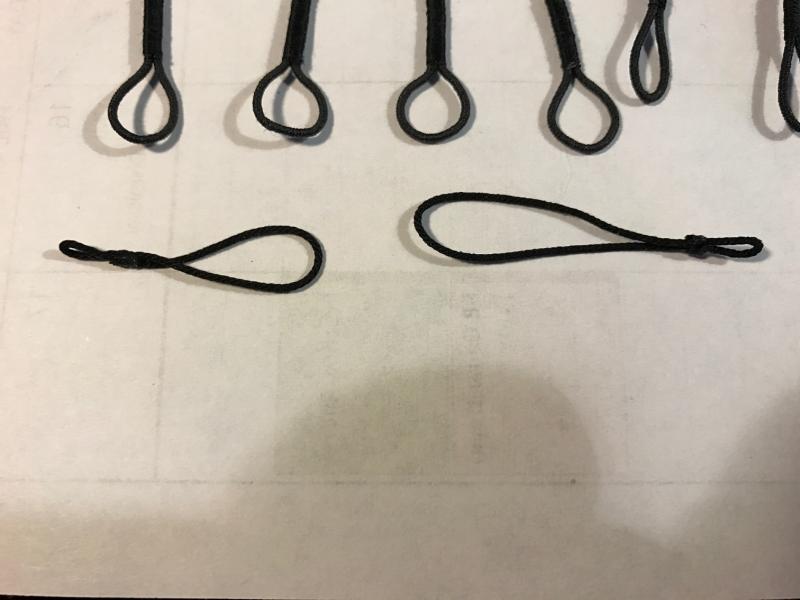
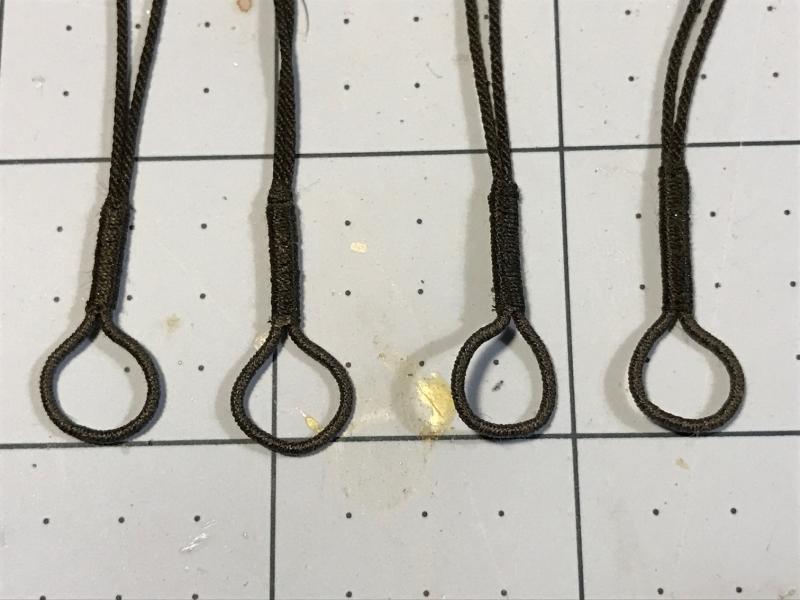
Section Deck Between Gunbays by mikiek - FINISHED - Panart - 1:23
in - Kit build logs for subjects built from 1751 - 1800
Posted
Mike,
This looks great. Have you finally decided whether you will be adding the hammock rail to your Niagara? I am getting close to that very decision. If so, have you given some thought how you would do it now that you have this experience.
Looking forward to when you get back to the Niagara. It is lonely out here on Lake Erie without you.